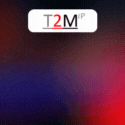|
|
|
 www.design-reuse-china.com
www.design-reuse-china.com |
|

Application of MIPI specifications for interconnecting components in IoT SoCs
By Hezi Saar, MIPI Alliance and Peter Lefkin, MIPI Alliance, Jul. 12, 2016 –
The IoT ecosystem is broad, complex, and rapidly evolving. It also means different things to different people. A good overall definition comes from the Internet Society, which characterizes IoT as "scenarios where network connectivity and computing capability extend to objects, sensors, and everyday items not normally considered computers, allowing these devices to generate, exchange, and consume data with minimal human intervention[1]."1
To estimate the fast growth and scale of this market, McKinsey Global Institute has projected that by 2025 the IoT could bring connectivity to 100 billion devices. It will also drive strong demand for components that are used to build IoT products. The firm reports that from 2013 to 2014, the market for IoT components and systems grew 160 percent and McKinsey expects that demand will continue to drive component growth at a rate of 30 percent per year through 2025[2].
IoT systems consist of numerous sensors with the associated electronics. The sensors are connected to the cloud wirelessly or via a standard network interface such as Ethernet or Wi-Fi - however, a single connectivity solution does not fit all. The use of wireless connectivity in an IoT system, for example, depends on the distance, bandwidth, security, and other variables specific to the use case. To add to the complexity, the SoC option at each stage of the IoT system will vary, ranging from high-end to low-end designs. The following sections describe these options and the role of MIPI Alliance interfaces in each.
Click here to read more...



 Back
Back